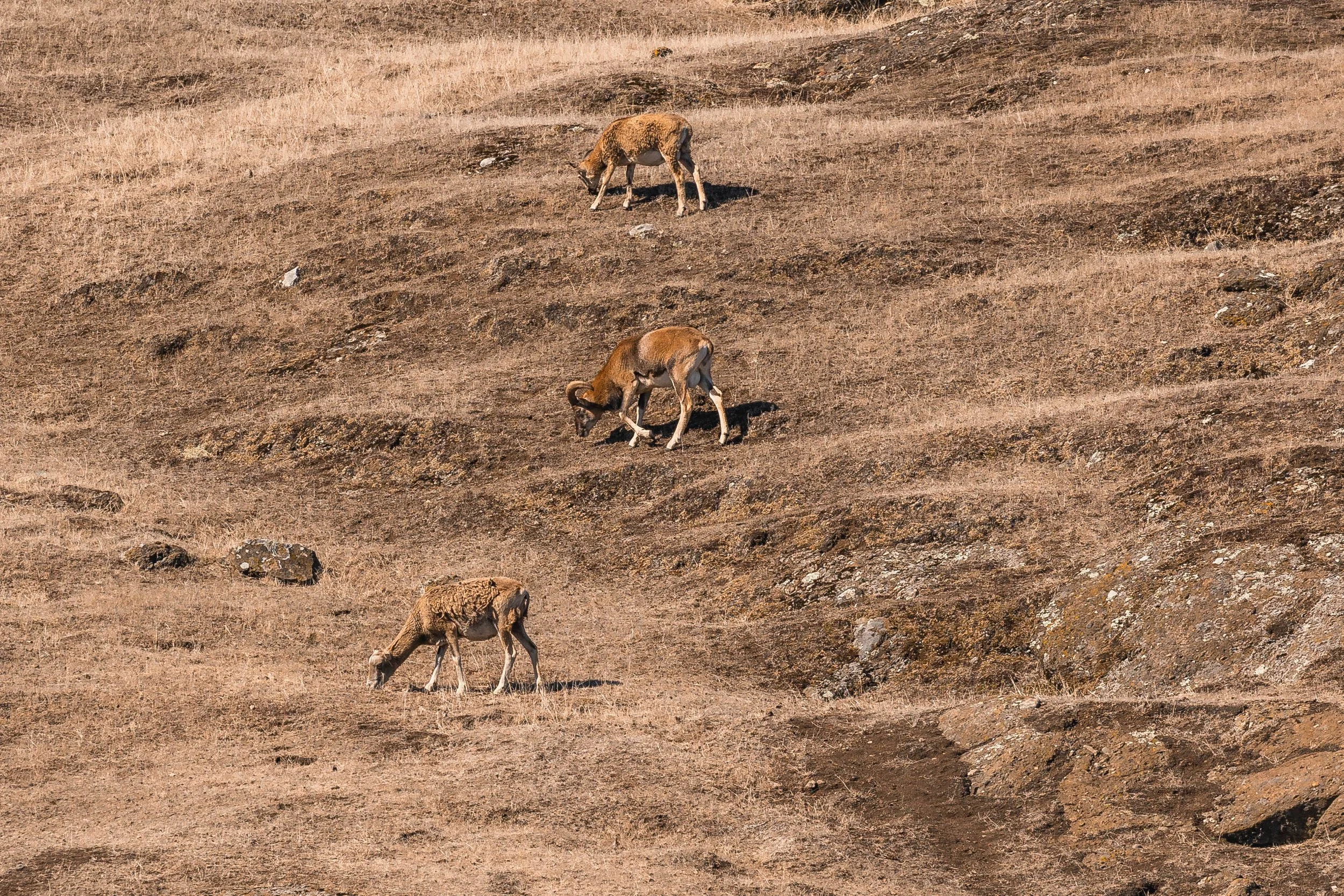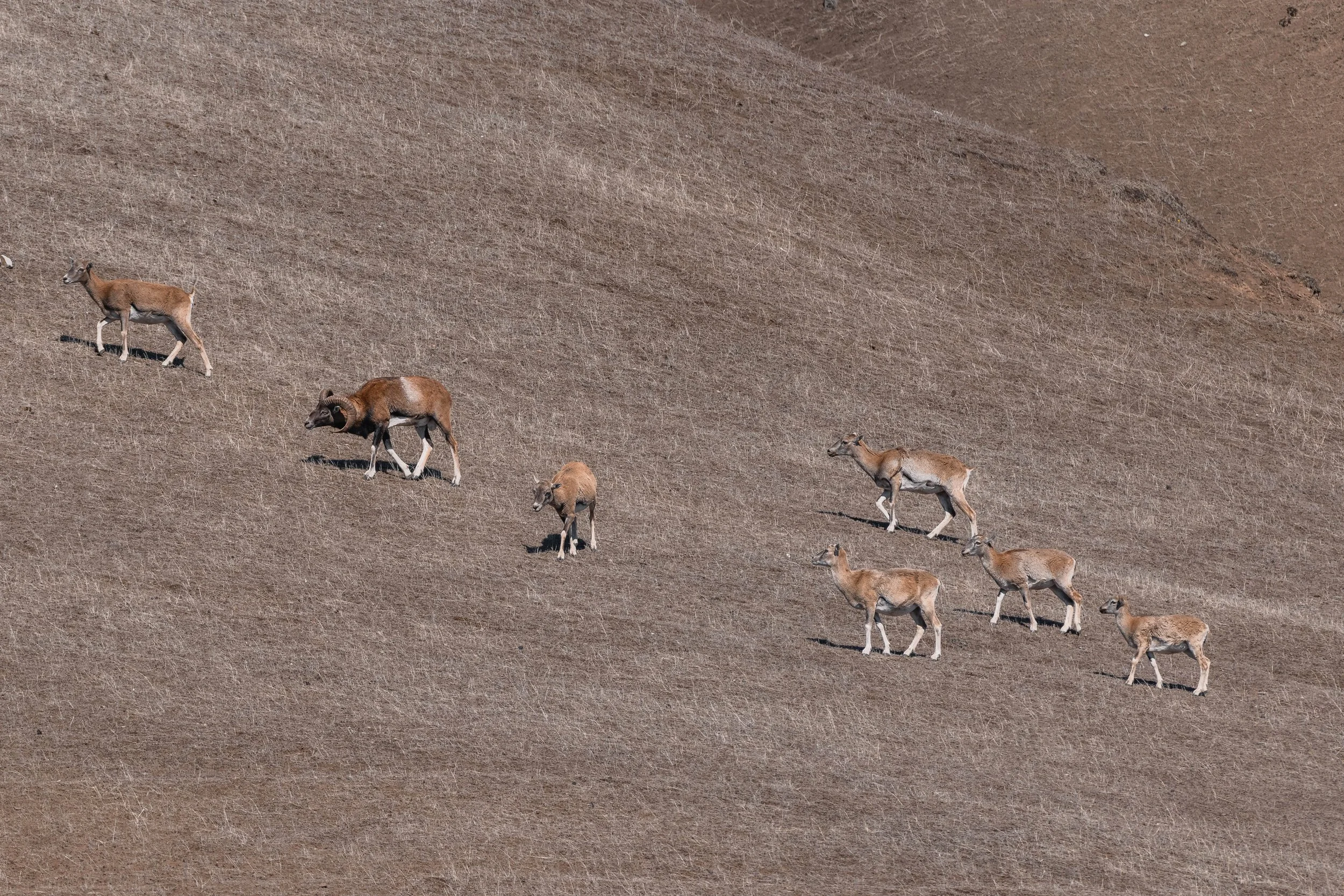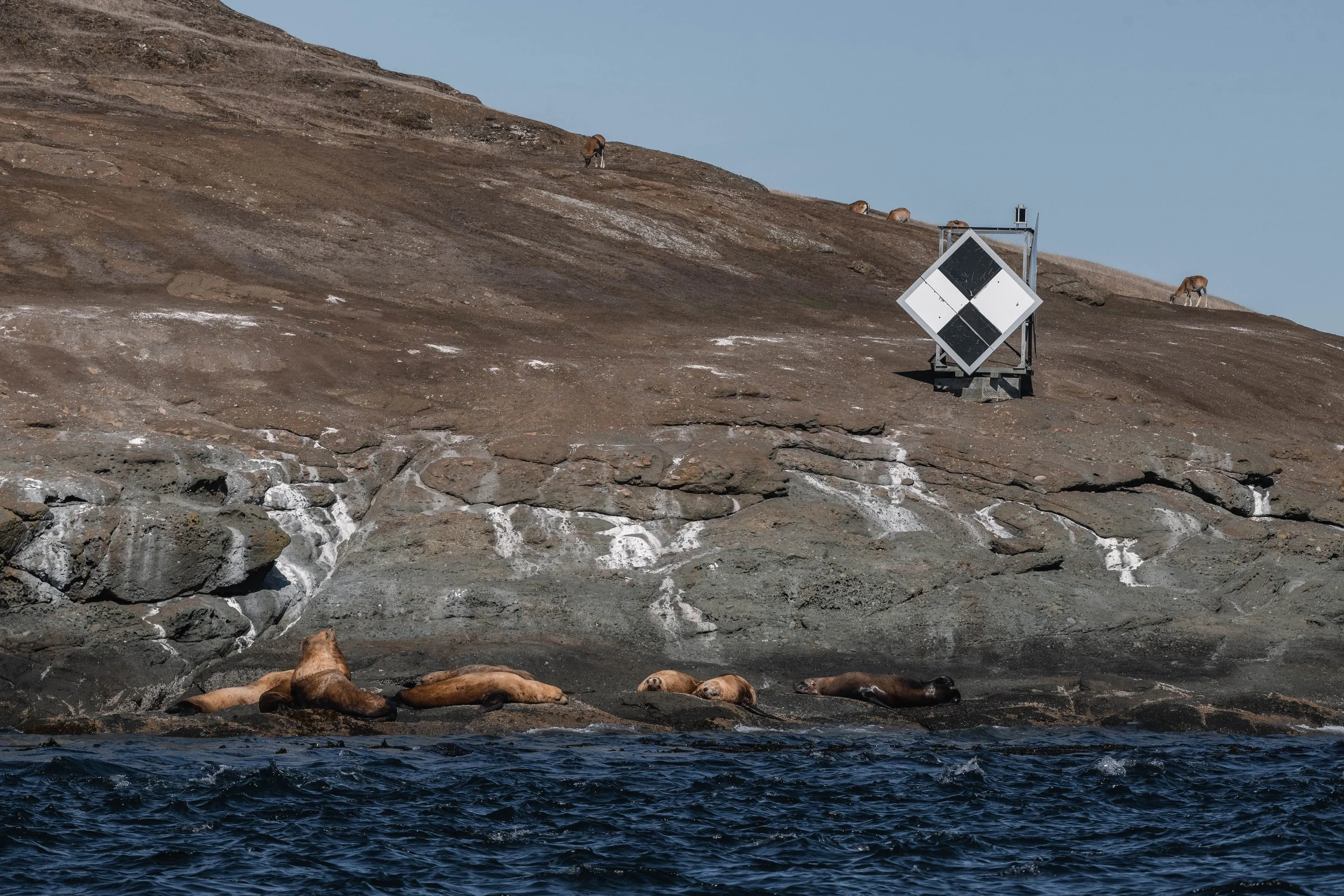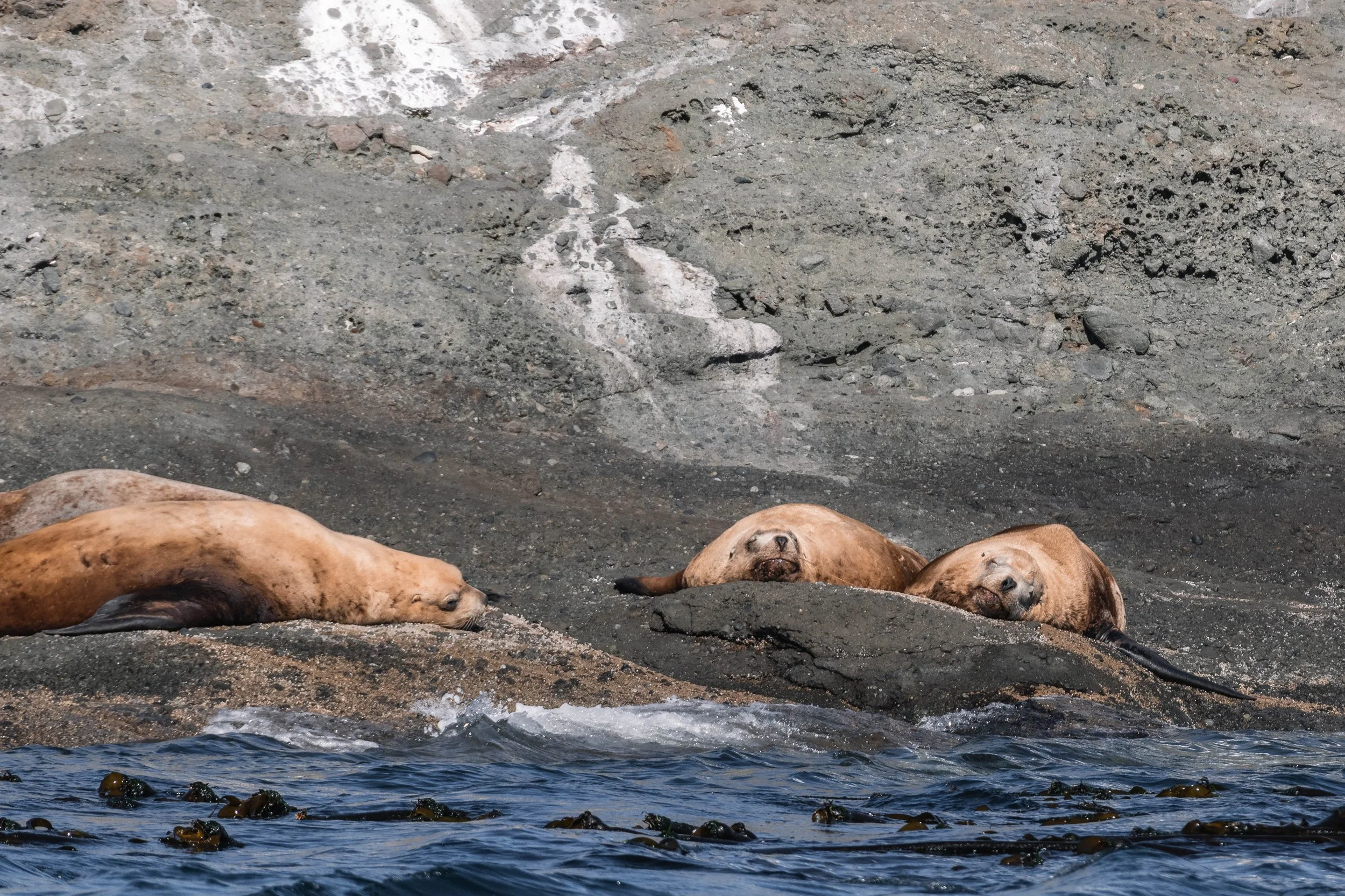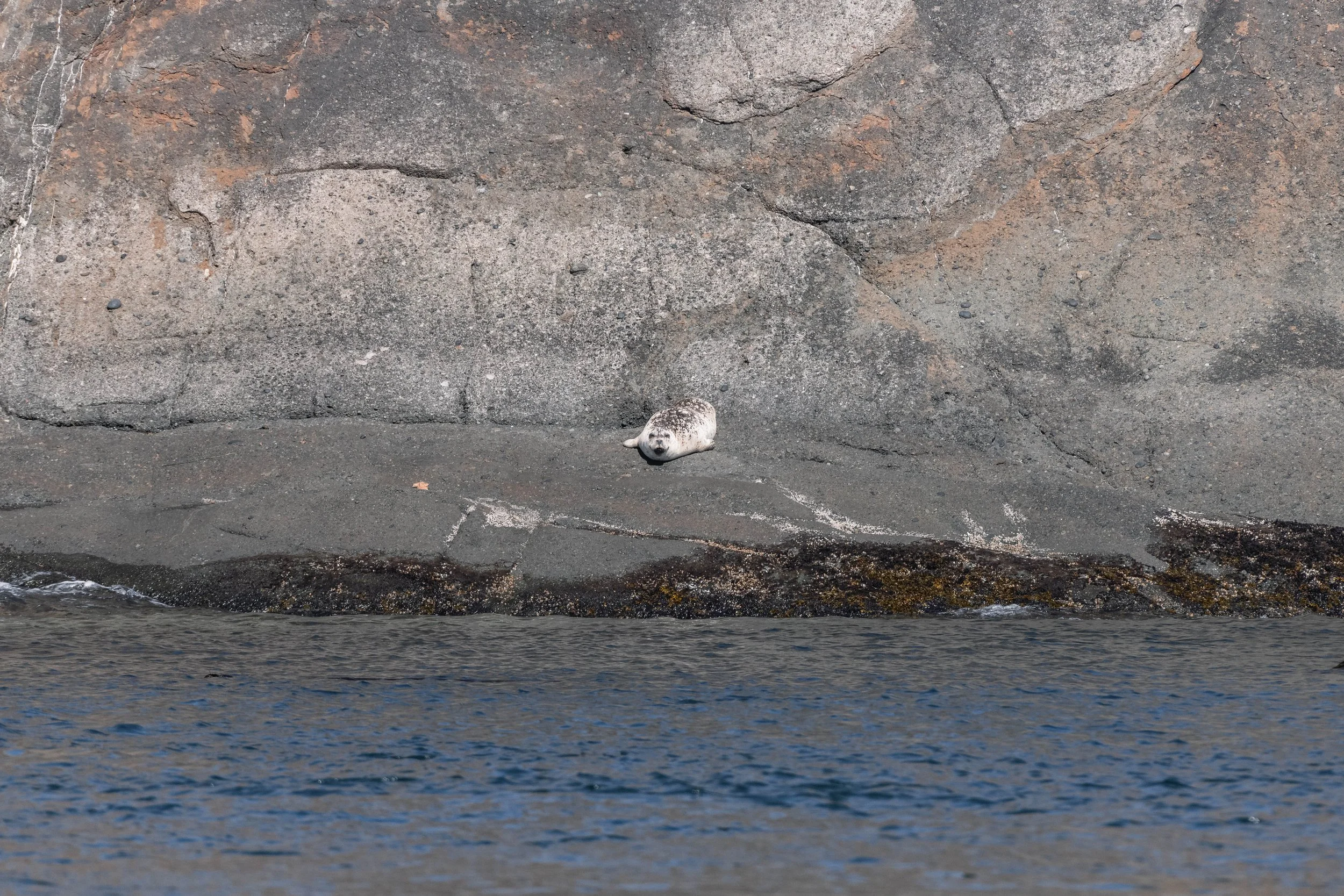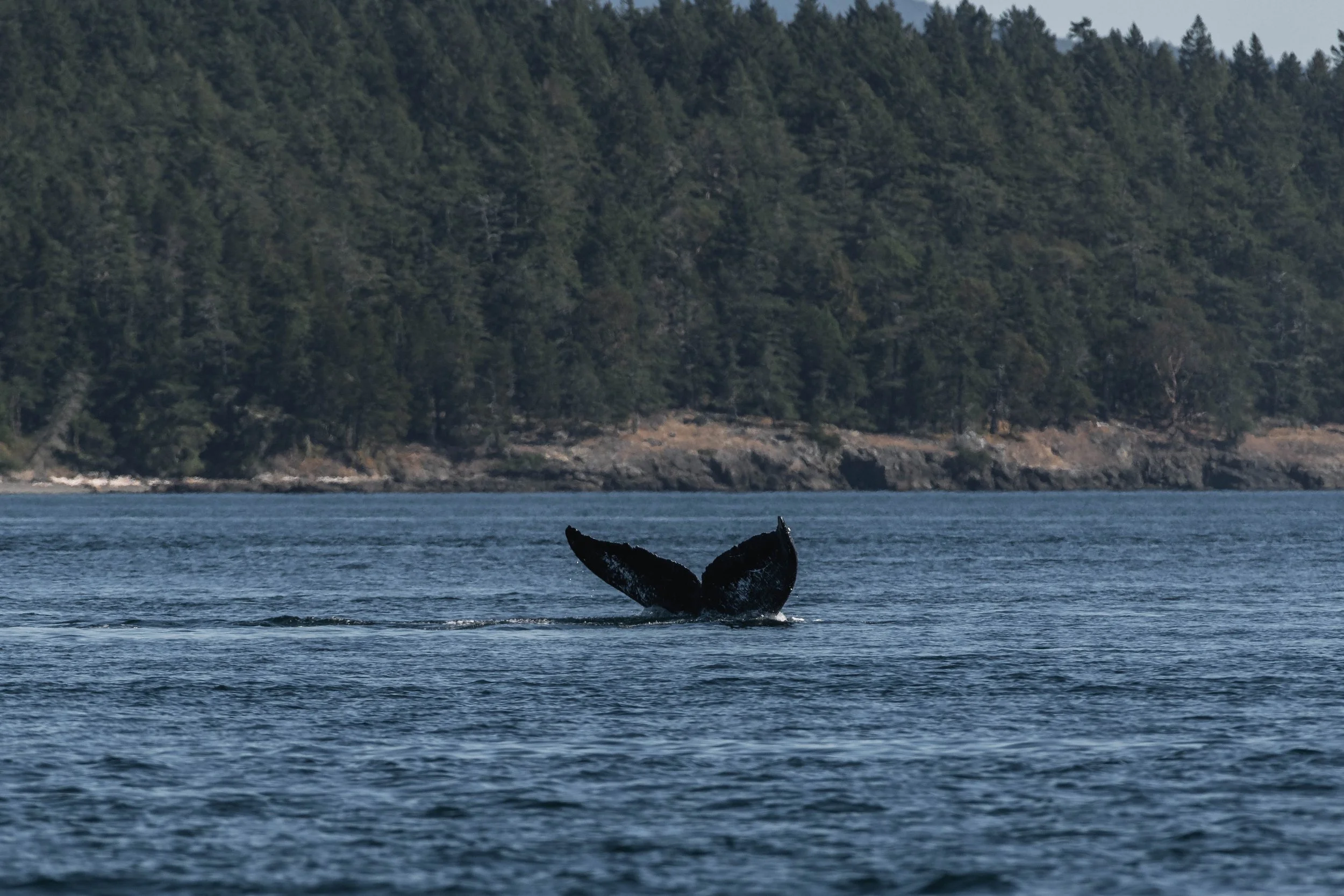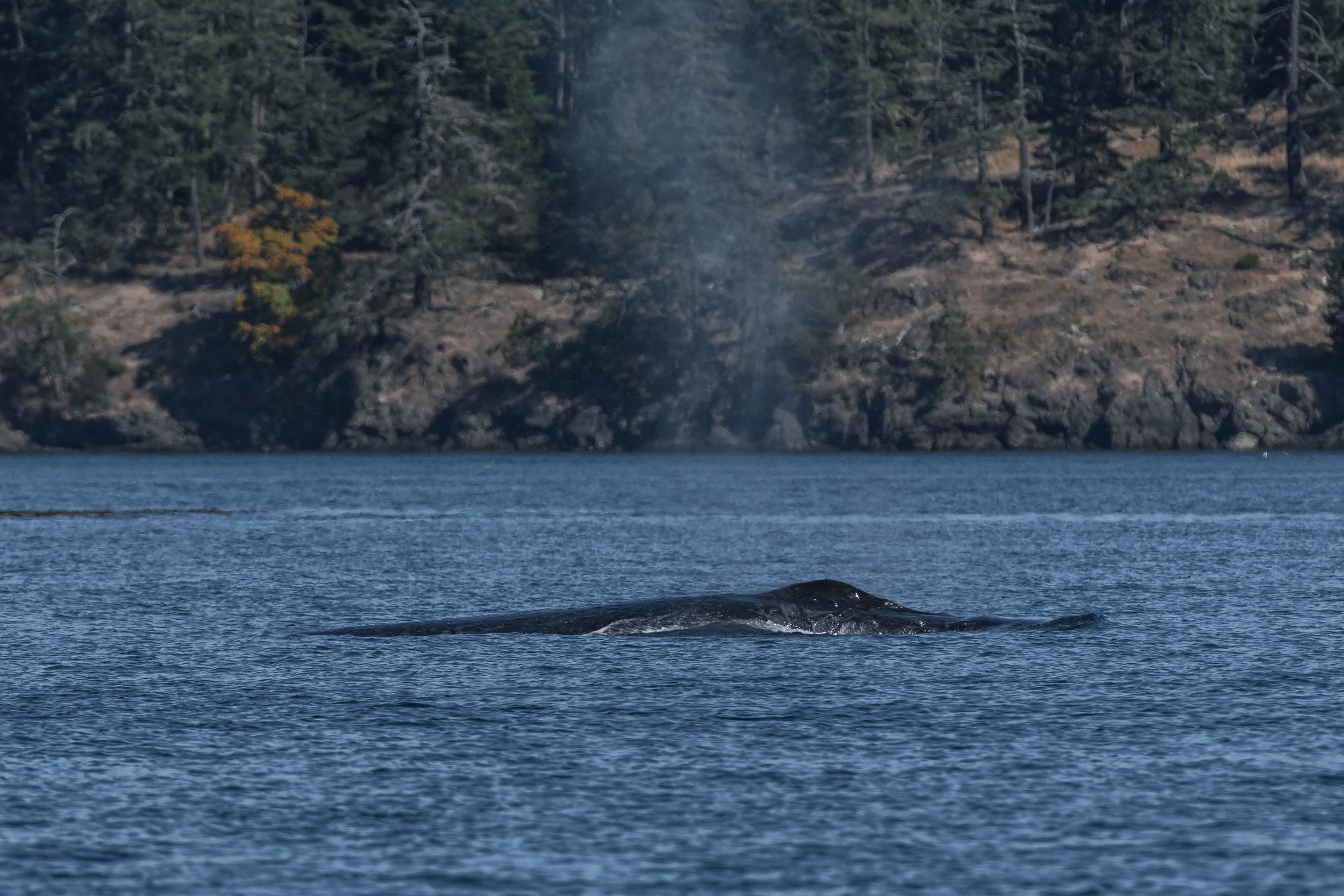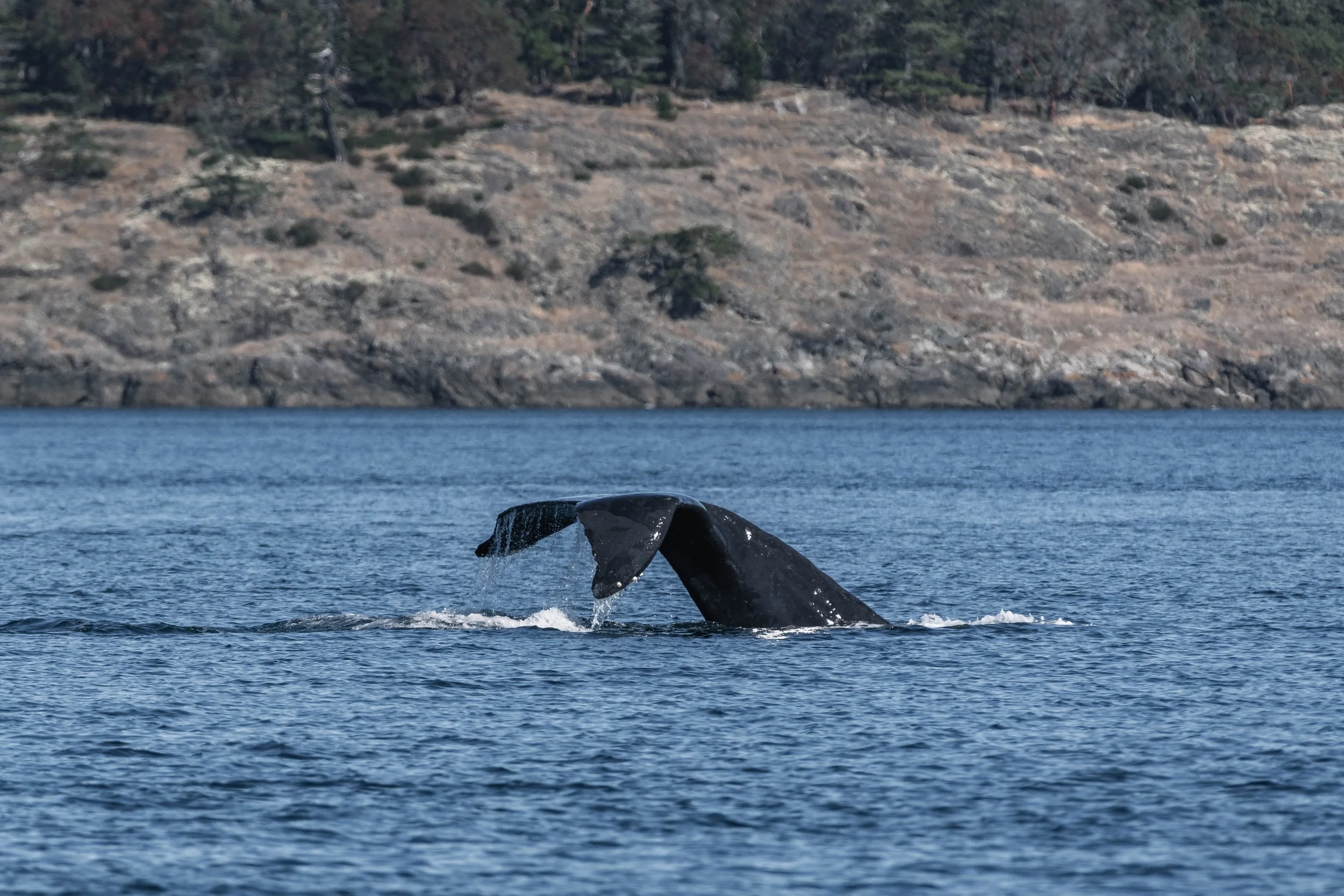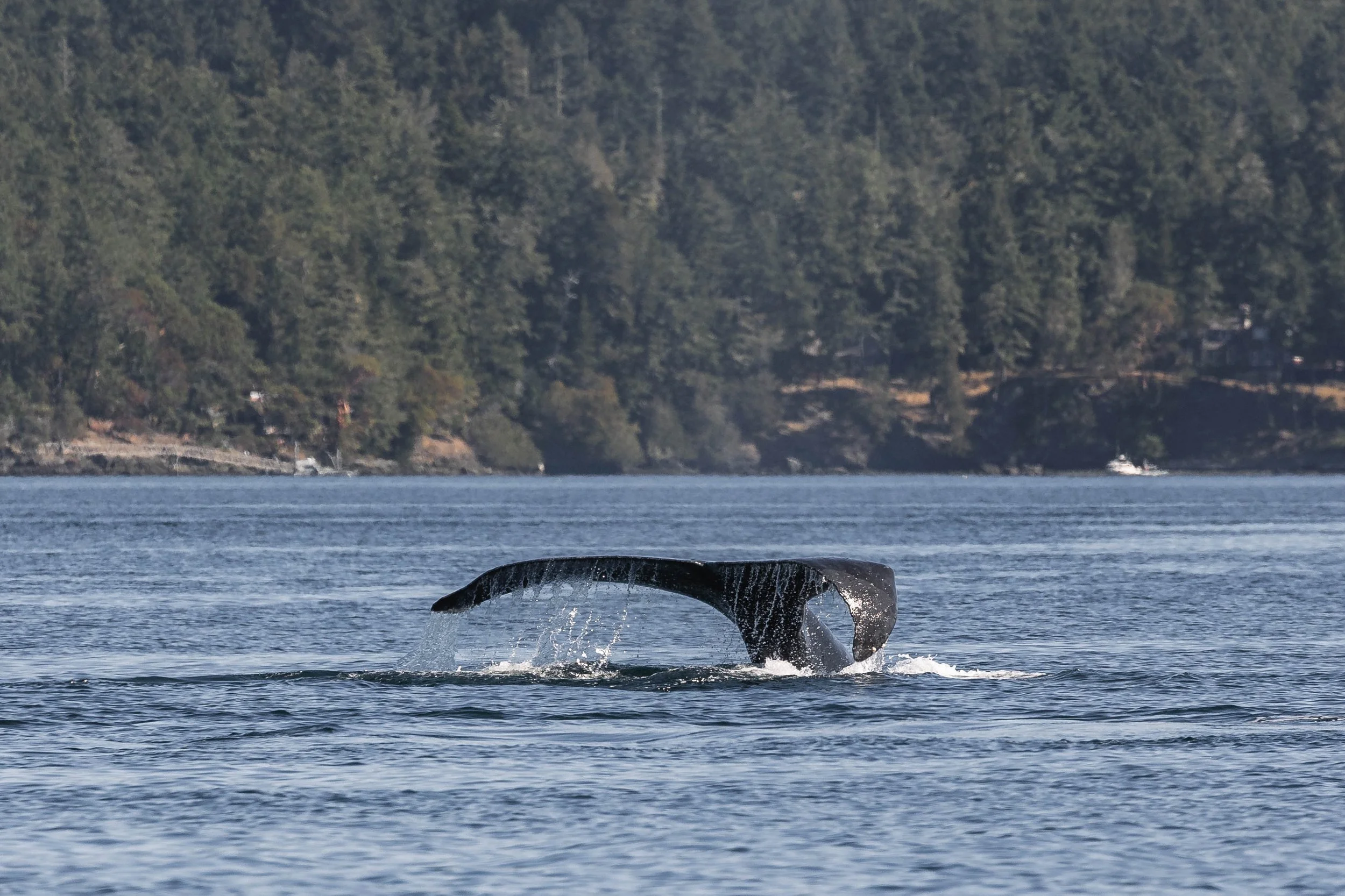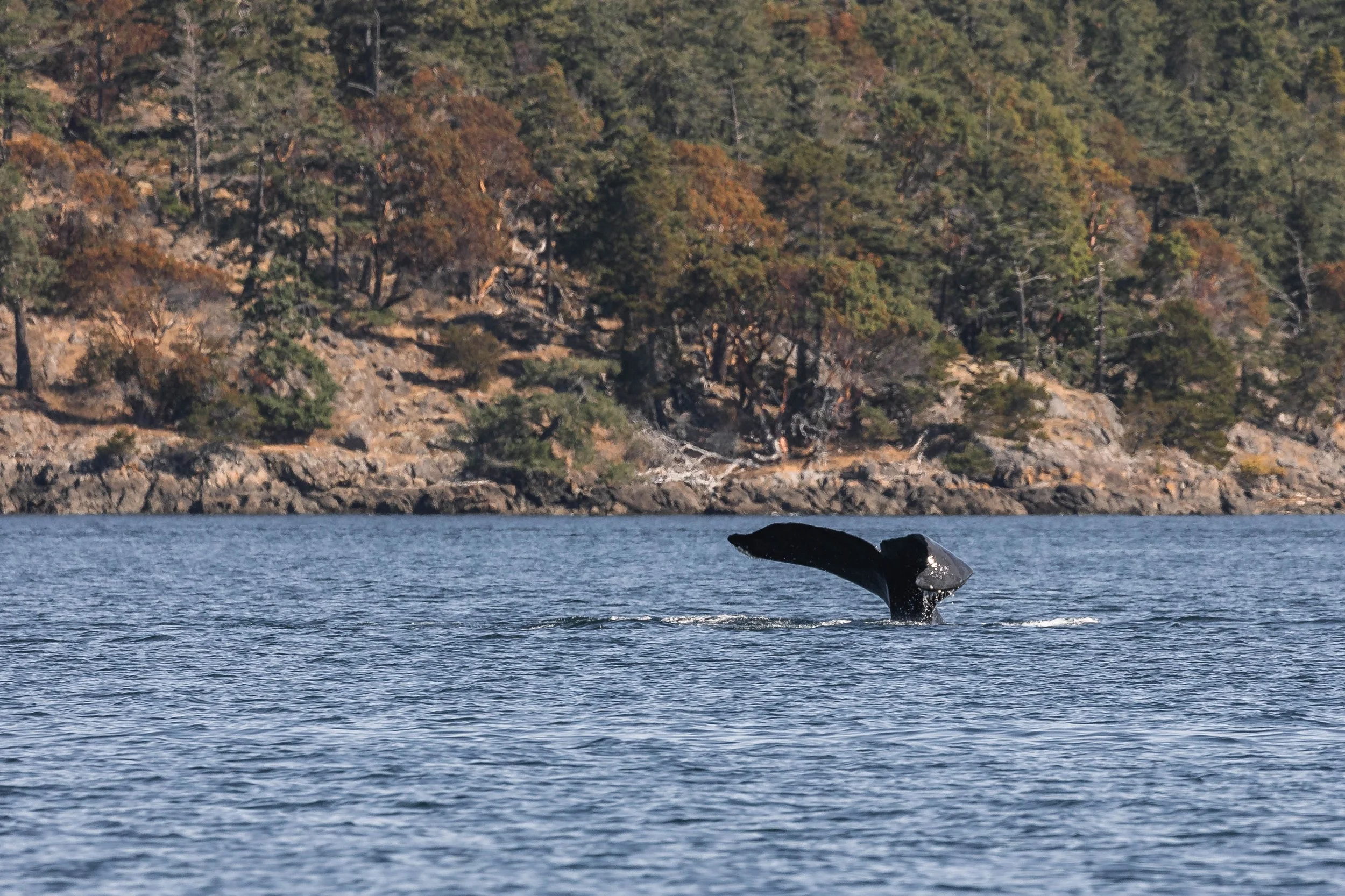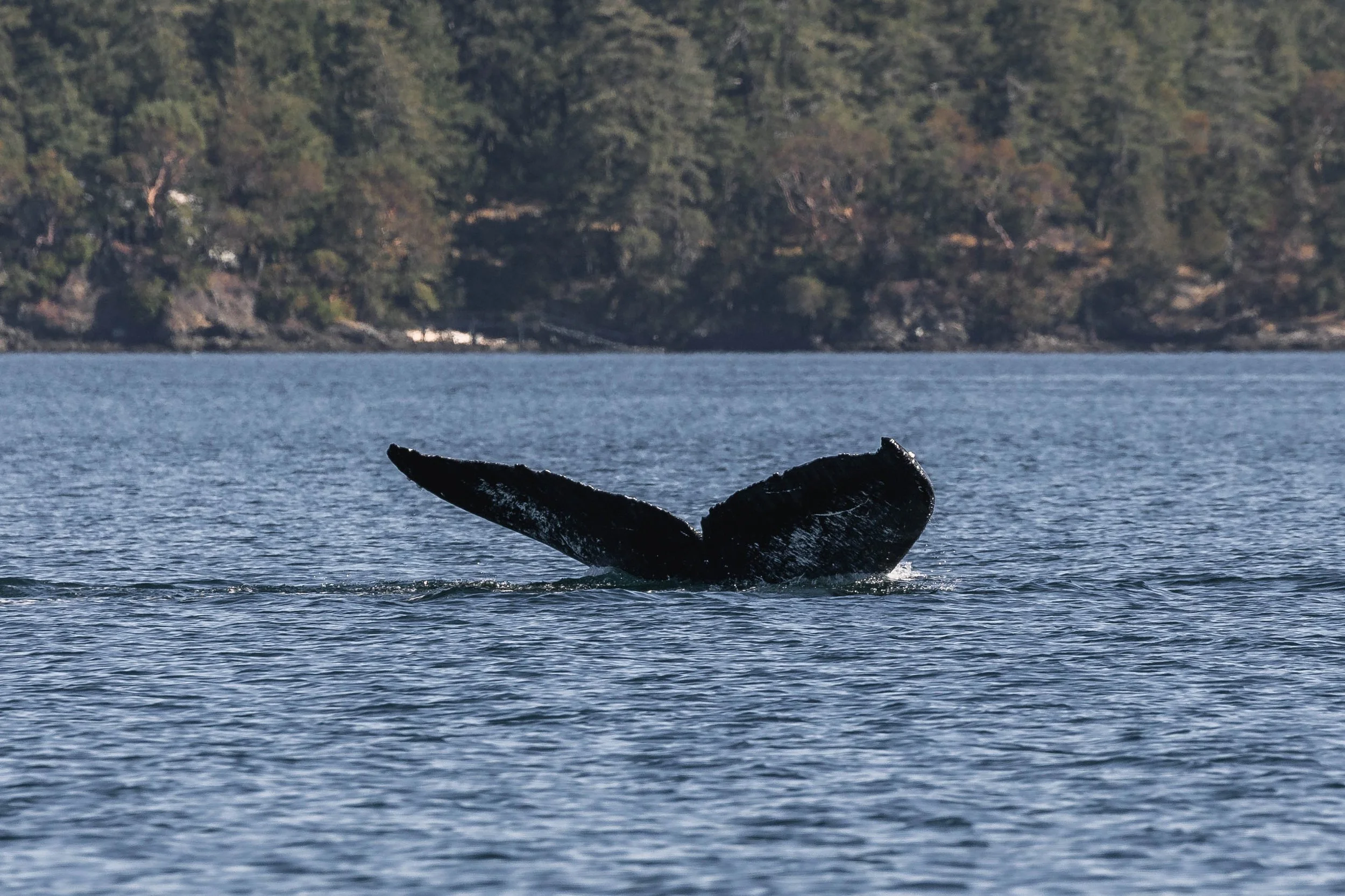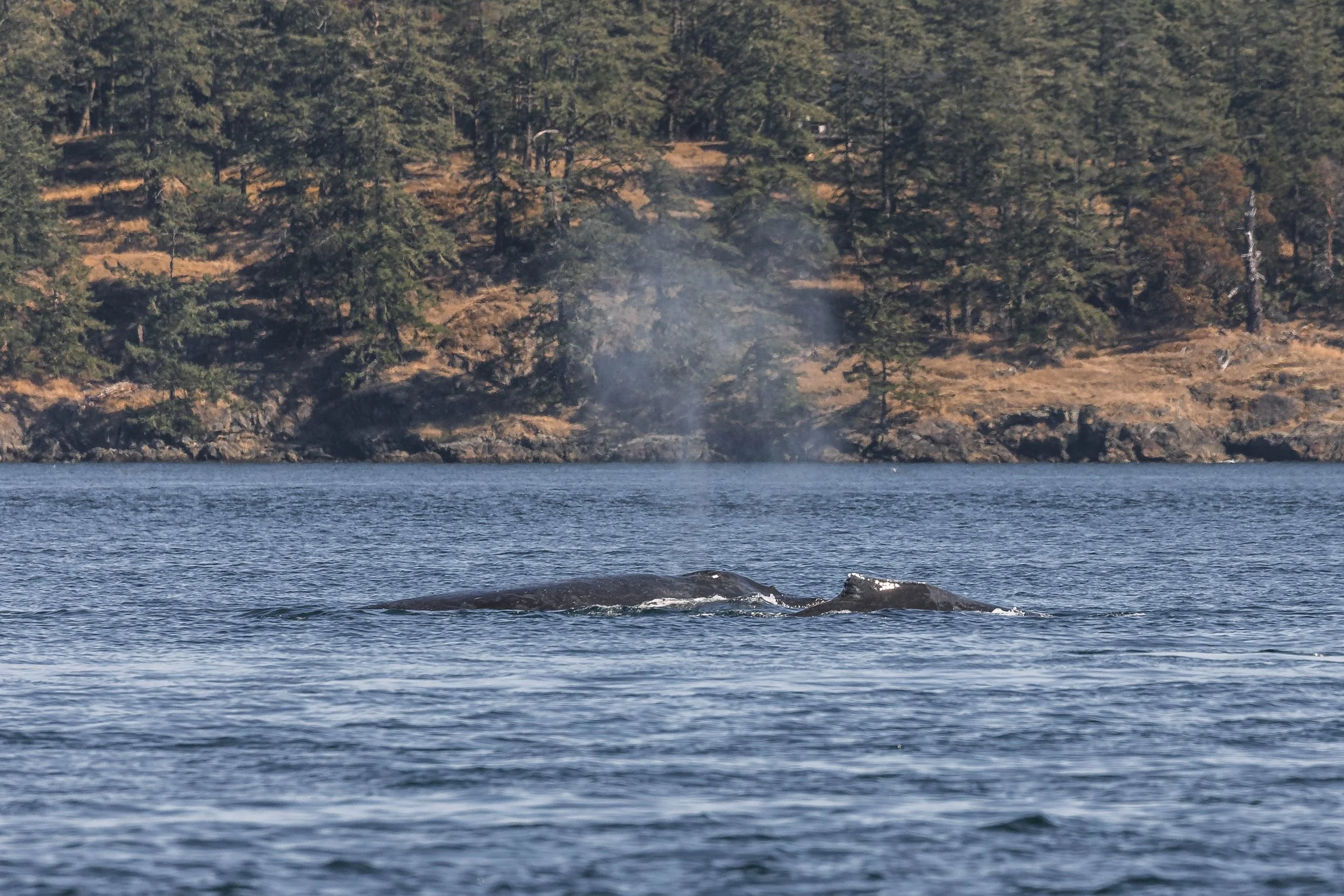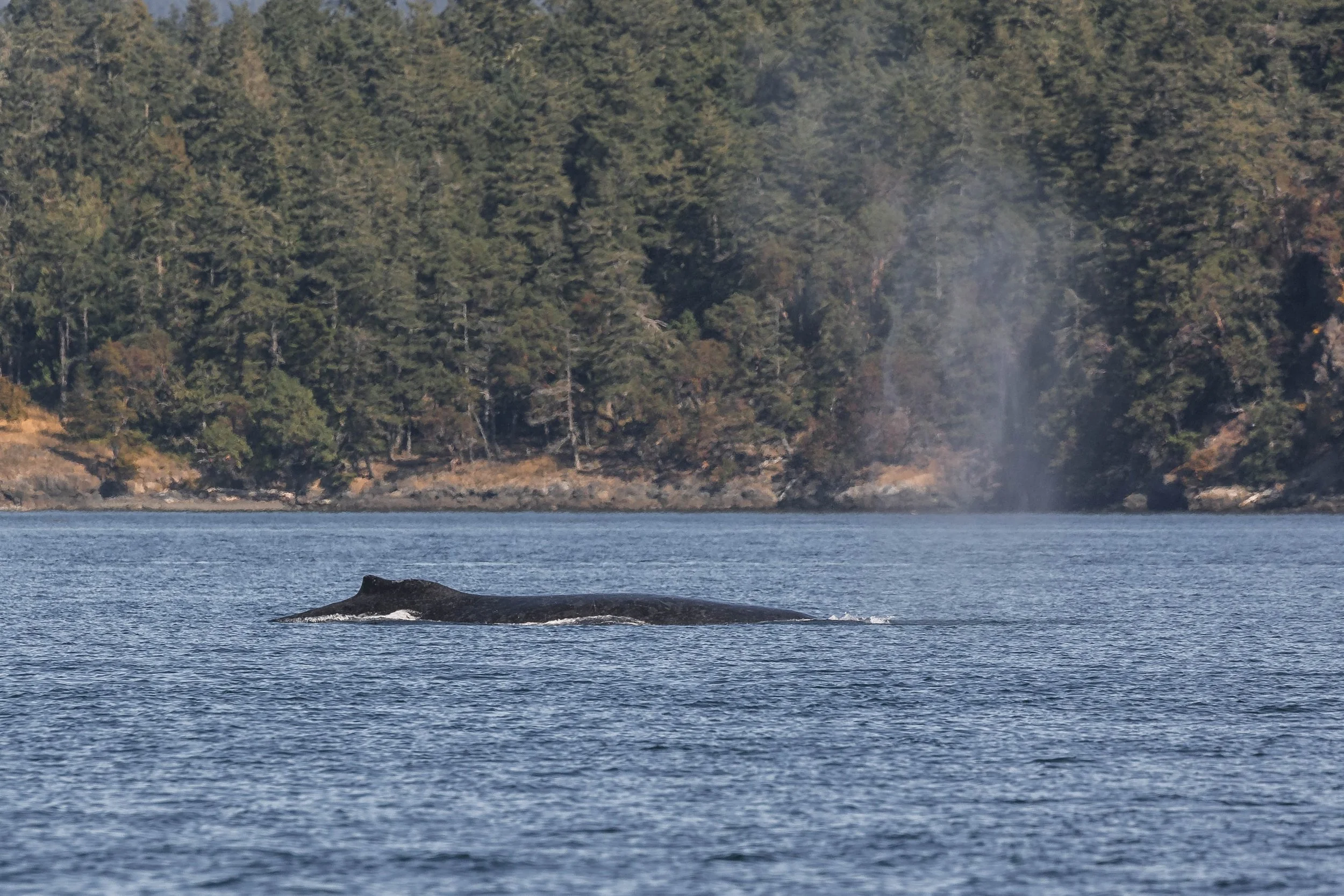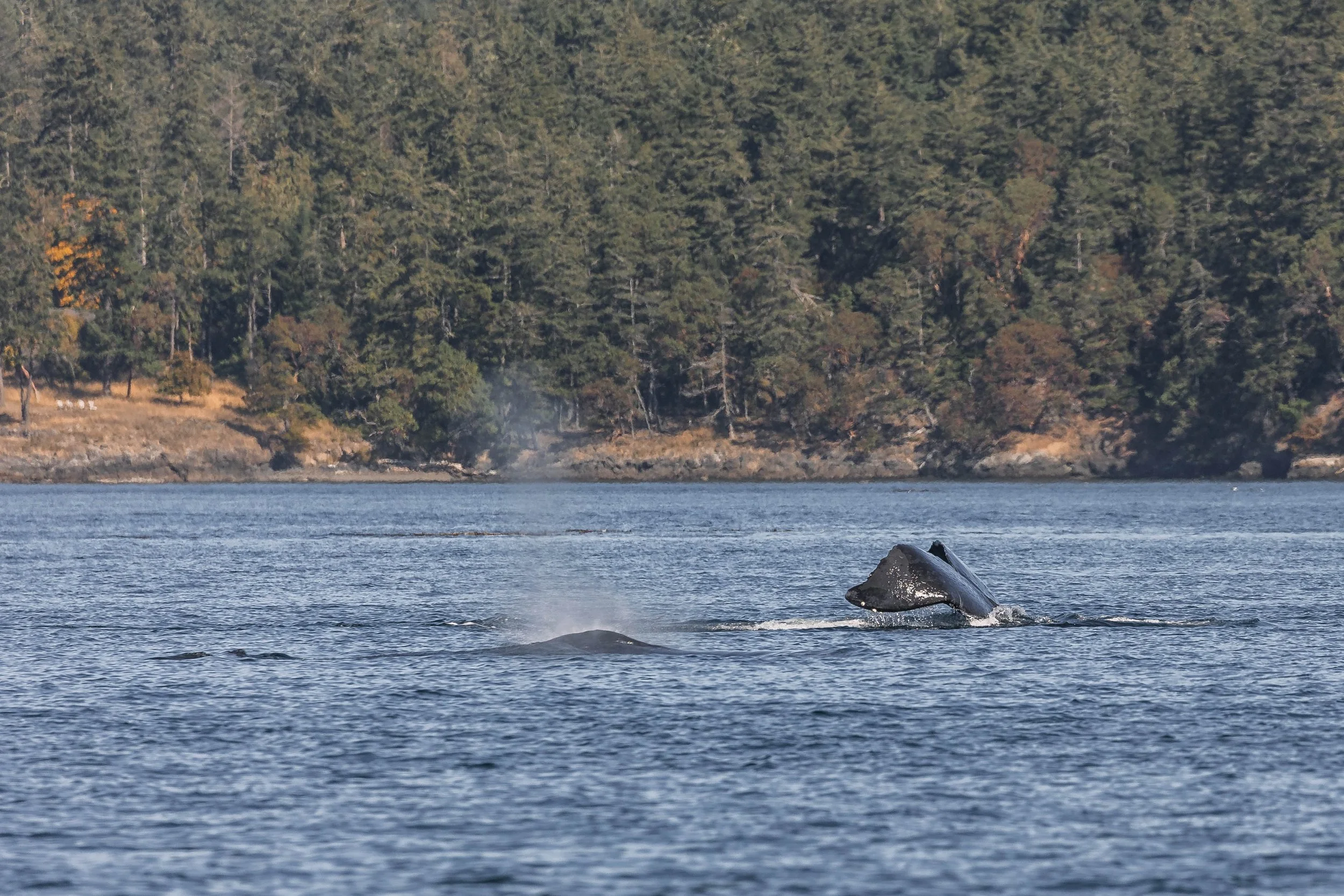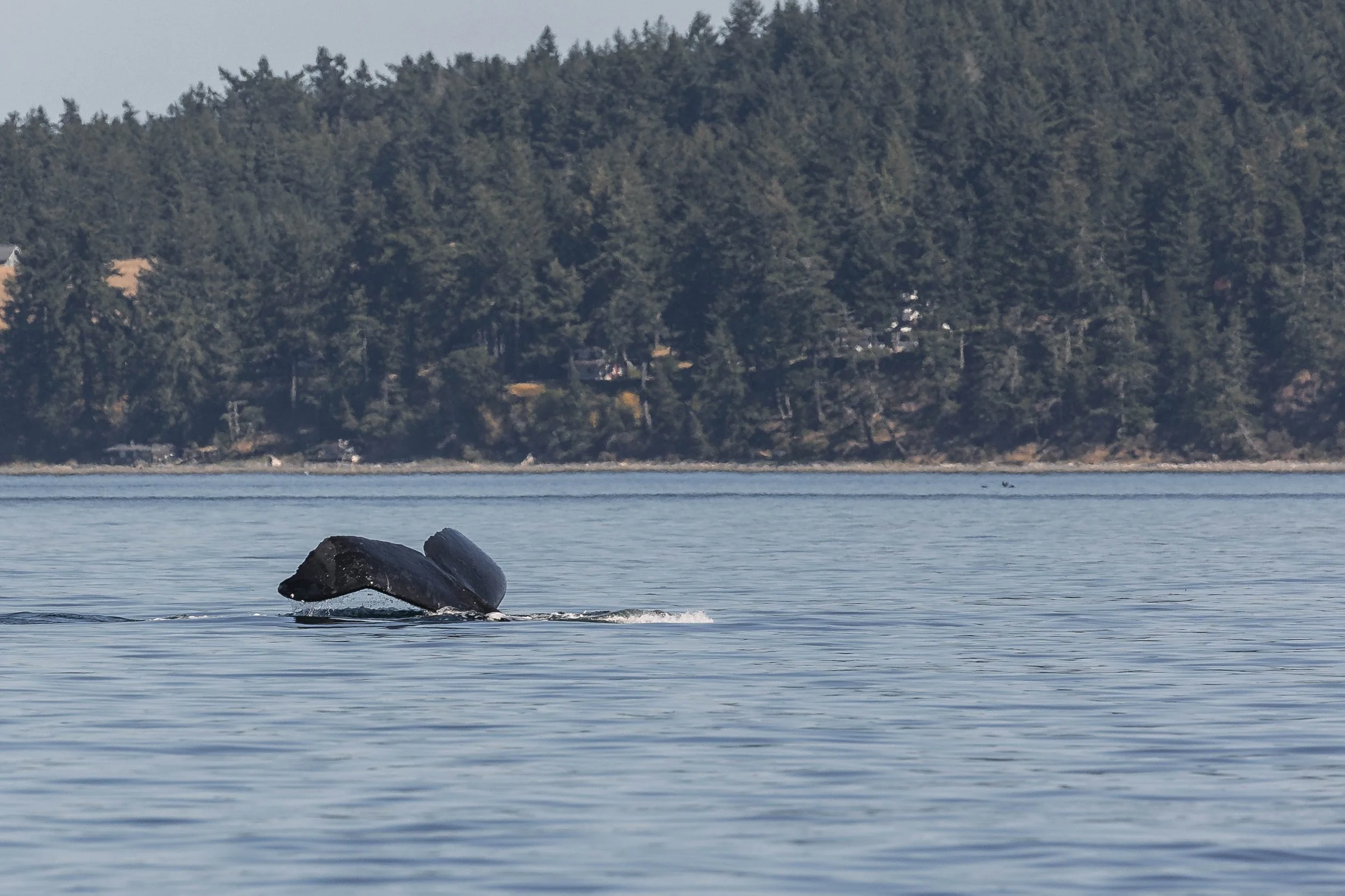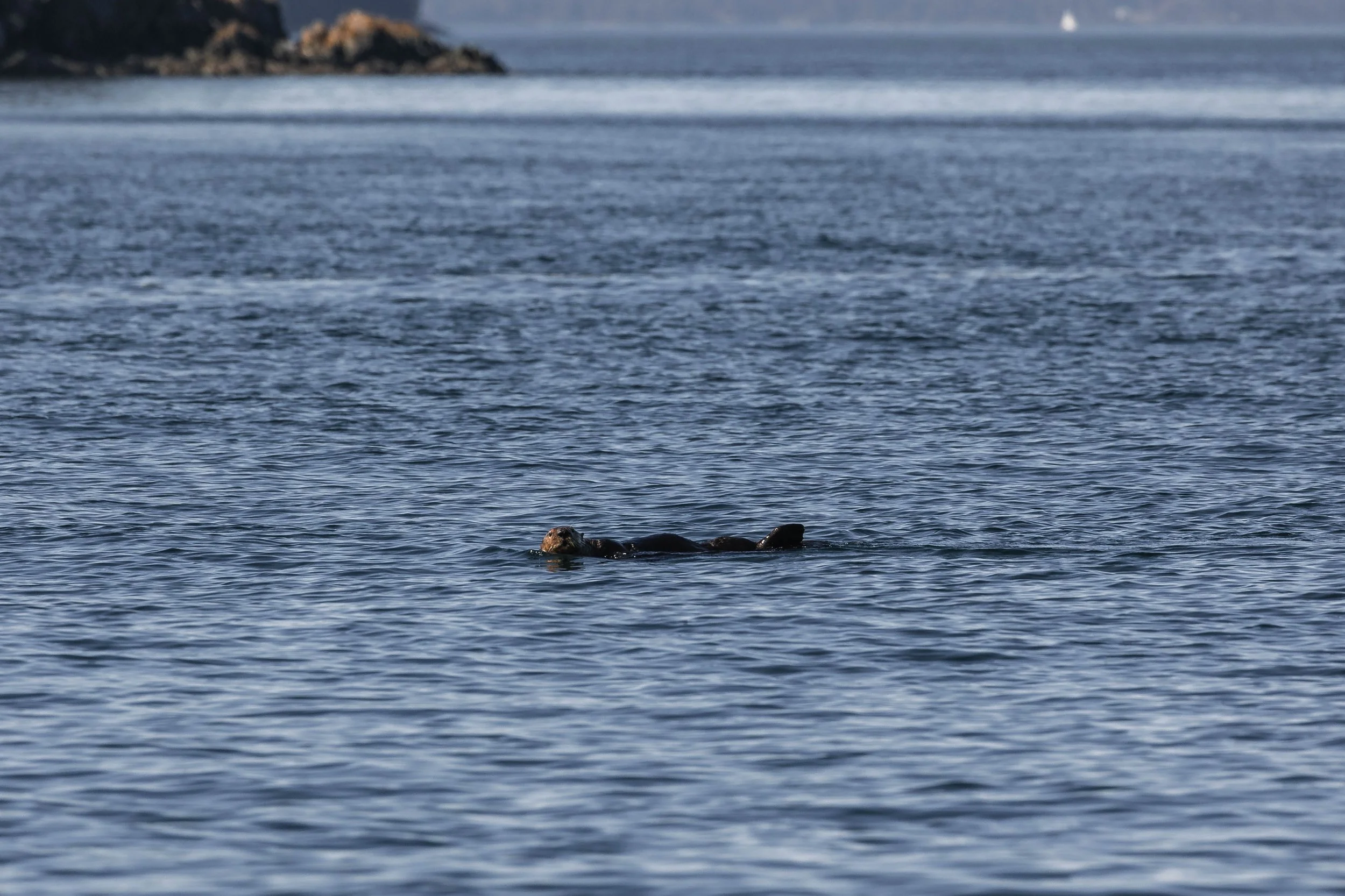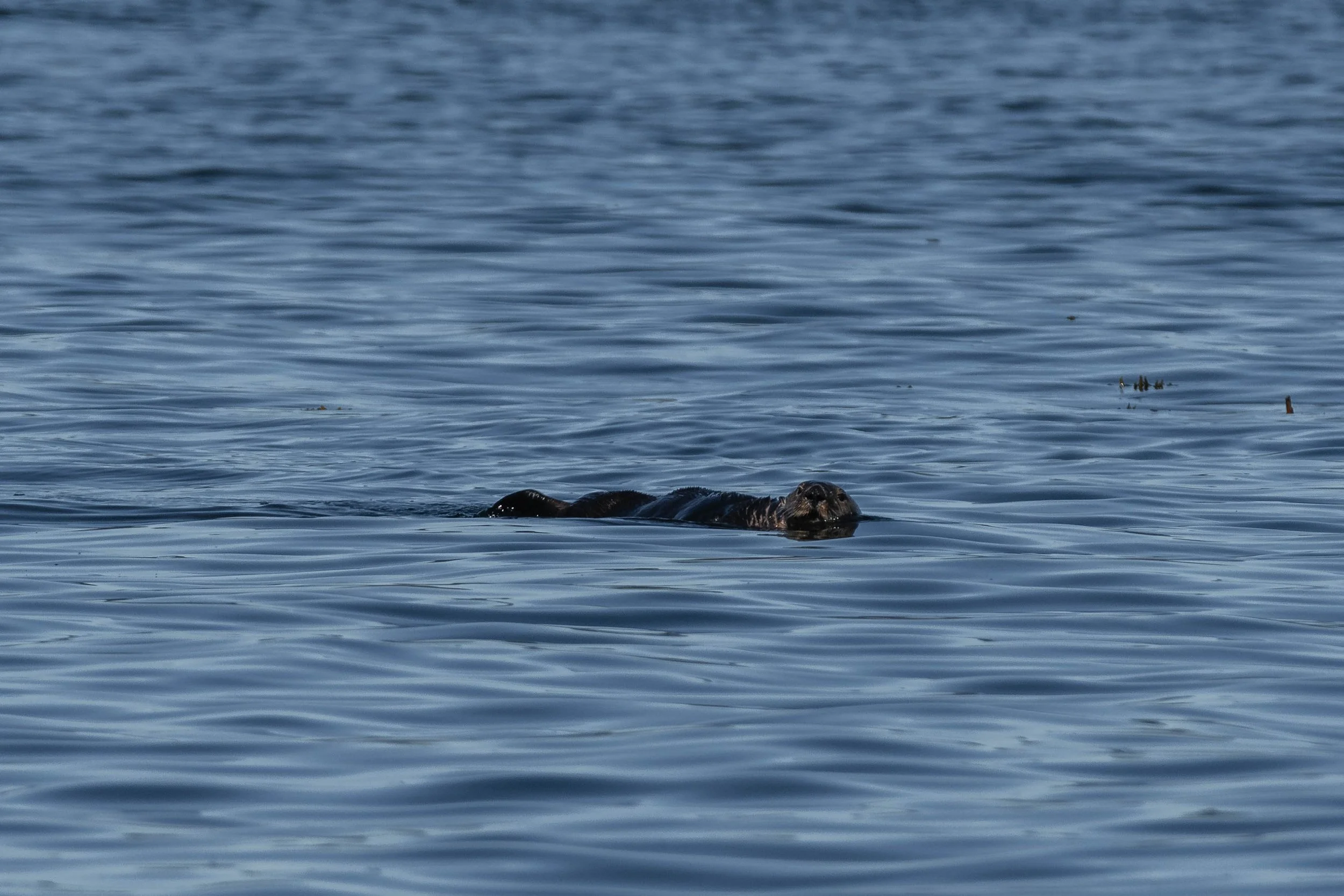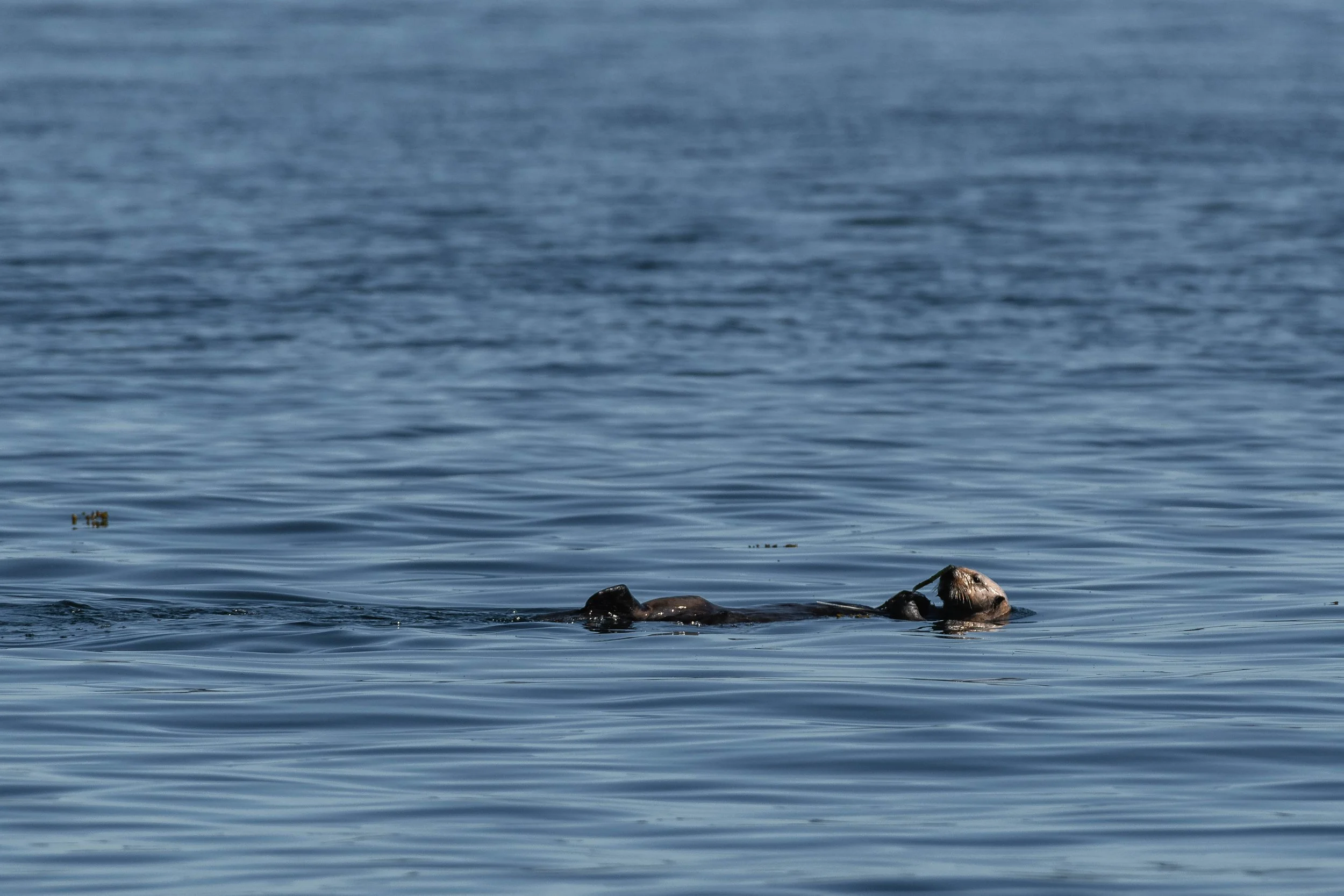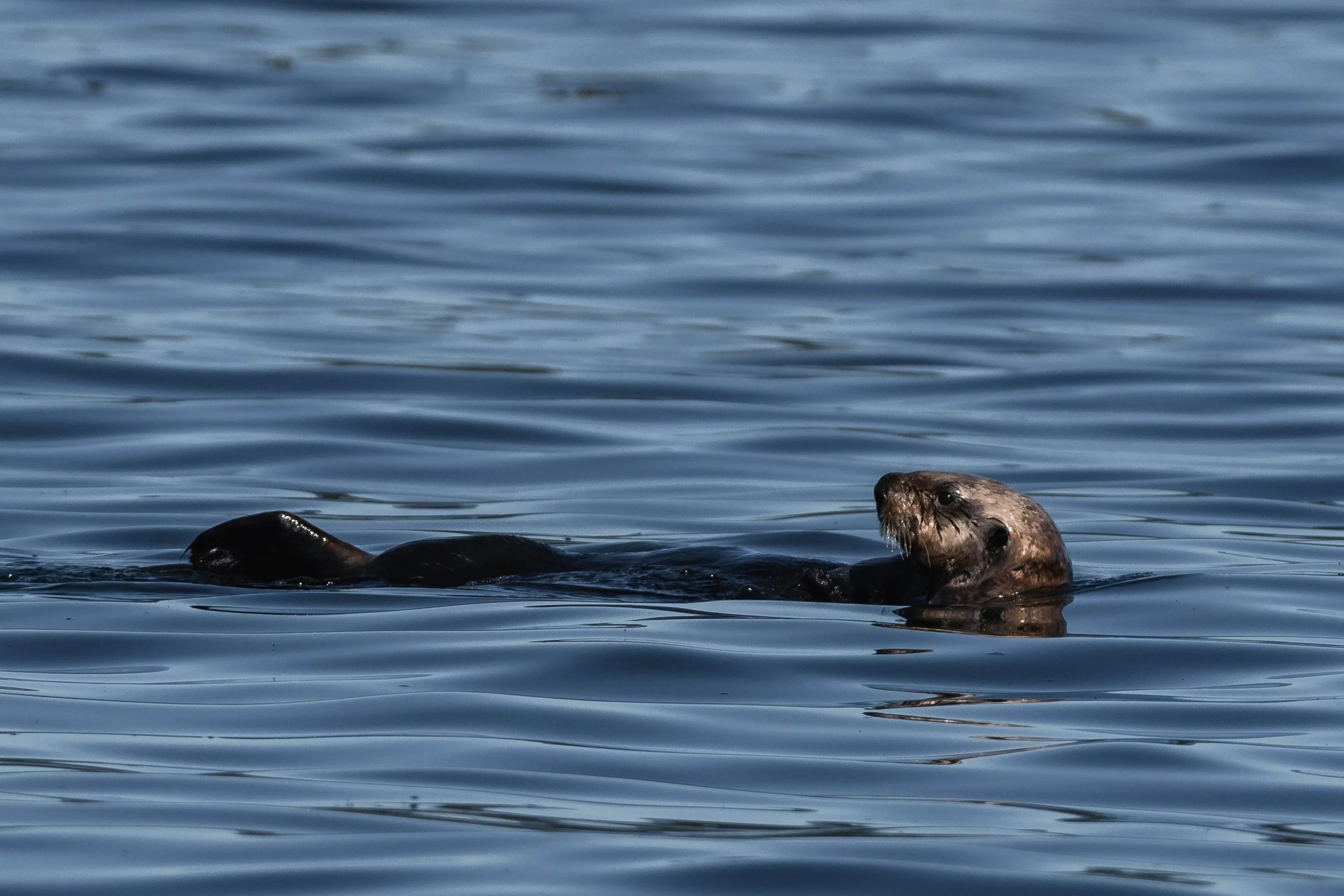September 24, 2025 - A Southern sojourn with Big Horn Sheep, Steller Sea Lions, a Sea Otter and familiar Humpbacks
It was one of those perfect fall afternoons that remind us how lucky we are to spend our days on the water. With sunny skies above and not a breath of wind in sight, our two vessels left Nanaimo Harbour and set out across a glass-like sea. The Salish Sea shimmered under the afternoon sun as we began our search for wildlife.
At first, things were quiet close to home. A few seabirds skimmed the surface, and the distant mountains mirrored perfectly in the water, making for a serene start to our journey. Reports had come in of whale blows seen from shore far to the south near the San Juan Islands, so we pointed our bows that way and hunkered down for a long but beautiful ride. The crew was excited; this part of our range isn’t one we visit often, and the Southern Gulf Islands always promise breathtaking scenery and surprises along the way.
The Southern Gulf Islands are a maze of over 200 islands and islets nestled between Vancouver Island and the mainland coast. This region is defined by steep rocky cliffs, lush coastal forests, and narrow channels where tides rush through like rivers. The unique combination of nutrient-rich waters and sheltered coves makes it a hotspot for both marine and terrestrial life. The islands also boast an incredible mosaic of ecosystems, Garry oak meadows, arbutus stands, kelp forests, and eelgrass beds, some of the rarest habitats in Canada.
As we cruised along the rugged shorelines, something unexpected caught our attention. A chorus of guttural roars and grumbles echoed across the channel, the unmistakable sound of Steller Sea Lions hauled out on the rocks.
Dozens of Steller Sea Lions lounged on the shoreline, their massive bodies draped across sun-warmed rocks. The largest of all eared seals, male Steller's can weigh up to 2,500 pounds and grow to over 3 meters long. Despite their size, they’re surprisingly agile, clambering up steep ledges and diving effortlessly below the surface.
While watching their noisy antics, something unusual caught our eye high above them on the rocky mountainside, movement where we least expected it. We raised our telephoto lens and couldn’t believe what we saw: a herd of Big Horn Sheep, calmly grazing in the golden afternoon light.
These sure-footed climbers are experts of the high country, capable of scaling near-vertical cliffs with ease thanks to their split hooves and rough hoof pads that provide incredible grip. Males, or “rams,” are easily recognized by their impressive curling horns, which can weigh up to 30 pounds on their own! The rams use these horns in head-to-head battles during mating season, where the sound of their clashes can echo through the valleys. Spotting Big Horn Sheep from the water is an incredibly rare treat and a reminder of just how interconnected these coastal ecosystems are, from sea lions at the tide’s edge to grazers on the mountain slopes above.
With hearts full from the unexpected encounter, we turned our attention back to the sea. As we approached the southern reaches of our range, faint blows appeared on the horizon. Two humpbacks were surfacing in the distance.
It didn’t take long for our crew to recognize them, Fader (BCY0195) and Fallen Knight (BCX0915), two well-known whales in our area. Fader has an inspiring story of resilience. Just days earlier, they had been spotted entangled in fishing gear, sparking concern throughout the whale community. Thankfully, they were successfully freed and are now looking strong and healthy, moving gracefully through the water, a true testament to the strength of these remarkable animals and the dedication of the disentanglement teams who work tirelessly to protect them. Read more about Faders' entanglement here.
Beside them was Fallen Knight, another recognizable whale with a distinct fluke deformity. One of her tail flukes curves downward, earning her the nickname. It’s uncertain how this deformity came to be; it could be a congenital trait, a result of injury, or a birth defect, but it hasn’t slowed her down one bit. Watching the two whales travel side by side, surfacing and diving in perfect sync, was a humbling and peaceful experience. They seemed to guide us through the stunning backdrop of the San Juan Islands, surrounded by deep blue waters and emerald shorelines.
As the sun began to dip lower in the sky, it was time to make the long journey back toward Nanaimo. But the ocean had one more surprise in store. Just off our route, a small, fuzzy head popped up among the calm ripples, a Sea Otter!
Once completely wiped out from British Columbia’s coast due to the fur trade in the 18th and 19th centuries, Sea Otters were reintroduced in the 1970s and have been slowly making a remarkable comeback. These charismatic creatures are true ecosystem engineers: by feeding on sea urchins, they help protect vital kelp forests that provide habitat for countless marine species. Watching one float serenely on its back, grooming its thick fur (the densest of any animal on Earth) was the perfect way to end our day.
With the sun setting over the Salish Sea, our vessels made their final approach back to Nanaimo Harbour. Today was a reminder of the incredible diversity and wonder that surround us, from towering cliffs with Big Horn Sheep to playful sea lions, resilient humpbacks, and the long-awaited return of sea otters. Every day on the water brings something new, and today’s trip will surely be one to remember.
Photos below taken by Hayleigh Hilbert and Aly Kohlman.
Big Horn Sheep grazing. Photo by Hayleigh Hilbert.
A nap on the mountain. Photo by Aly Kohlman.
How many sheep can you count? Photo by Aly Kohlman.
A male Big Horn Sheep. Photo by Aly Kohlman.
The Steller Sea Lions resting on the rocks as the sheep snack on some greens. Photo by Aly Kohlman.
Some sleepy Stellers. Photo by Aly Kohlman.
A male Steller growls as the others sleep right through it! Photo by Hayleigh Hilbert.
Relaxing in the sun. Photo by Hayleigh Hilbert.
A chubby harbour seal. Photo by Aly Kohlman.
Fader fluking. Photo by Aly Kohlman.
Fallen Knight surfacing. Photo by Aly Kohlman.
A fluke from Fallen Knight. Photo by Aly Kohlman.
A fluke waterfall from Fader. Photo by Aly Kohlman.
Fallen Knight with her own fluke waterfall. Photo by Hayleigh Hilbert.
You can really see her fallen fluke in this photo. Photo by Hayleigh Hilbert.
Fader going for a dive. Photo by Hayleigh Hilbert.
Surfacing side by side, Fader in front of Fallen Knight. Photo by Hayleigh Hilbert.
Fallen Knight’s dorsal fin. Photo by Hayleigh Hilbert.
Fallen Knight surfacing. Photo by Hayleigh Hilbert.
Fallen Knight fluking as Fader comes up behind her. Photo by Hayleigh Hilbert.
Fallen Knight going for a dive. Photo by Hayleigh Hilbert.
A sea otter floating past us. Photo by Hayleigh Hilbert.
Look at those bushy wiskers. Photo by Aly Kohlman.
“Excuse me do I have something on my face?” Photo by Aly Kohlman.
A sea otter floating in the calm water. Photo by Aly Kohlman.

